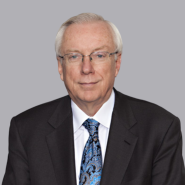Ex Parte Timothy – The PTAB gets Mayo wrong
- October 23, 2017
- Article
Associated People
Ex parte Timothy is another warning to all practitioner’s that the USPTO’s guidance documents are just that – guidance. Guidance is not law and is not even binding on the USPTO. The guidance is an attempt to provide the examiners with help in applying the patent eligibility decisions of the various courts. Since no two sets of claims are identical, the examiners and the PTAB must use their judgment in applying the guidance. While some may decry the lack of consistency, it actually helps the knowledgeable practitioner since some guidance examples are definitely not universally applicable.
The guidance on peptide segments, Example 28, claim 6, is definitely misleading since it implies that all peptide segments are not patent eligible which is clearly an incorrect reading of Myriad. Peptide segments properly claimed are patent eligible if the segment possesses a utility not possessed by the full-length peptide. Myriad at 133 S. Ct. 2118. This admonishment is followed by the USPTO guidance at Fed. Reg., Vol. 79, No. 241 at 74621 where the “product of nature” exception is explained. There the USPTO described such products as being patent eligible if the product as claimed had “markedly different” structure, function, or properties from that found in nature.
It also should be a wake-up call that that patent eligibility questions involving diagnostics that the Mayo decision must be read very carefully lest it be applied in situations where by its very terms it does not apply. The claim in Timothy read:
1. A method for treating a human subject having or suspected of having a psychotic disorder, comprising:
a) selecting a subject having or suspected of having a psychotic disorder and who has been determined to have the OPRP genetic signature, wherein the OPRP genetic signature is defined as a genotype comprising a homozygous genotype for the T allele at rs11960832 and either a homozygous or heterozygous genotype for the T allele at rs7975477; and
b) treating the subject that was determined to have the OPRP signature with an antipsychotic treatment other than clozapine or quetiapine
The record is devoid of evidence that the relationship between OPRP genetic signature and the efficacy of the psychotic drugs clozapine or quetiapine was known. Mayo explicitly excluded from its scope situations where one or more of the steps in the method were not conventional.
We need not, and do not, now decide whether were the steps at issue here less conventional, these features of the claims would prove sufficient to invalidate them. S.Ct. 1289, 1302 (2012).
If step (a) or (b) in the Timothy claim was not conventional, then Mayo does not apply. Here the claim is using the natural law to perform a patient selection that, on the record, had not been performed previously. Thus, the natural law is not being claimed, it is being used a very specific manner which is apparently novel.
Unfortunately, this argument was not presented to the PTAB, the appellant largely relying on the guidance amazonic acid example. In diagnostics it is important to read carefully the entirety of the Mayo decision since the PTAB and the courts seem to be reading and applying an abridged version.










 Counseling & Strategic Advice
Counseling & Strategic Advice IP Transactions
IP Transactions Litigation
Litigation PTAB Proceedings
PTAB Proceedings Start-Up
Start-Up Technology Transfer
Technology Transfer Trademark & Designs
Trademark & Designs U.S. Patent Procurement (Application Drafting & Prosecution)
U.S. Patent Procurement (Application Drafting & Prosecution)








